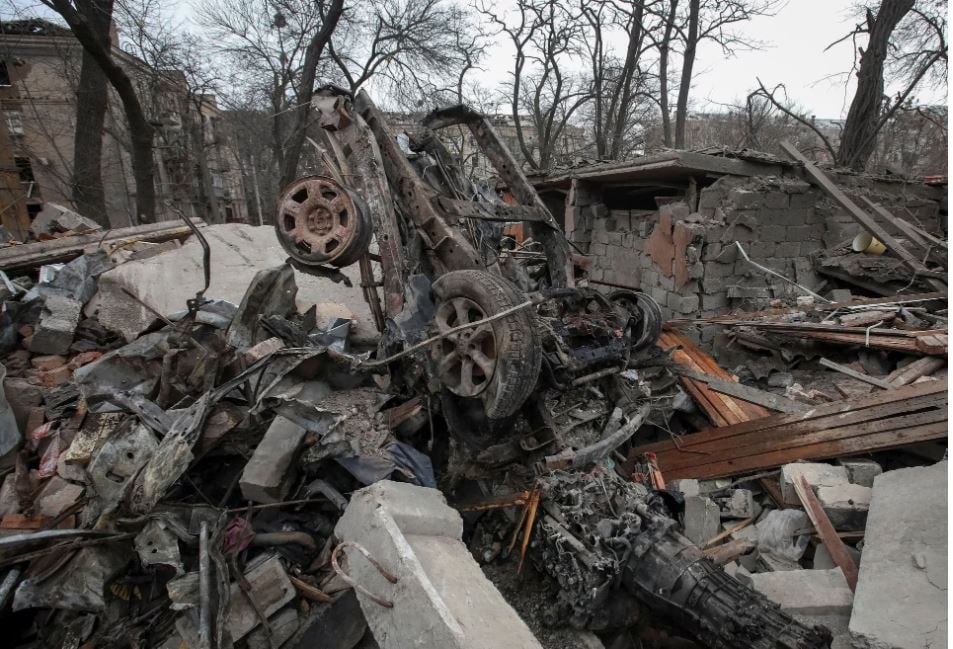WASHINGTON/KYIV: Feb 2 (Reuters) - The United States has answered President Volodymyr Zelenskiy's plea for rockets that can strike deep behind the front lines of the nearly year-long conflict with Russia.
Now Russian forces will need to adapt or face potentially catastrophic losses.
The new weapon, the Ground Launched Small Diameter Bomb (GLSDB), will allow Ukraine's military to hit targets at twice the distance reachable by the rockets it now fires from the U.S.-supplied High Mobility Artillery Rocket System (HIMARS). If included as expected in an upcoming weapons-aid package first reported by Reuters, the 151 km (94 mile) GLSDB will put all of Russia's supply lines in the east of the country within reach, as well as part of Russian-occupied Crimea.
This will force Russia to move its supplies even farther from the front lines, making its soldiers more vulnerable and greatly complicating plans for any new offensive.
"This could slow down [a Russian assault] significantly," said Andriy Zagorodnyuk, Ukraine's former defence minister. "Just as HIMARS significantly influenced the course of events, these rockets could influence the course of events even more."
GLSDB is GPS-guided glide bomb that can manoeuvre to hit hard-to-reach targets such as command centres. Made jointly by SAAB AB (SAABb.ST) and Boeing Co (BA.N), it combines the GBU-39 Small Diameter Bomb (SDB) with the M26 rocket motor, both of which are common in U.S. inventories.
It is not yet compatible with HIMARS, but the United States will provide Ukraine new launchers for the rockets, said sources. GLSDB could be delivered as early as spring 2023, according to a document reviewed by Reuters.
VULNERABLE SUPPLY LINES
When the United States first sent HIMARS launchers in June, it supplied rockets with a 77 km (48 mile) range. This was a major boost for the Ukrainian military, allowing it to destroy Russian ammunition dumps and weapons storage facilities.
Once Ukraine has the new glide bombs, say military experts, Russia will need to push its supplies even farther away.
"We are currently unable to reach Russian military facilities more than 80 kilometres away," said Ukrainian military analyst Oleksandr Musiyenko. "If we can reach them practically all the way to the Russian border, or in occupied Crimea, then of course this will lower the attacking potential of Russian forces."
Crucially, Ukraine will soon be able to reach every point of the occupied overland route to Crimea via Berdiansk and Melitopol. That will force Russia to redirect its supply trucks to the Crimean bridge, which was badly damaged in an attack in October.
"Russia is using Crimea as a big military base from which it sends reinforcements for its troops on the southern front," said Musiyenko. "If we had a 150km (munition), we could reach that and disrupt the logistical connection with Crimea."
Beyond the logistical impact, the addition of a longer-range weapon to Ukraine's arsenal could help shake Russian confidence.
Tom Karako, a weapons and security expert at the Center for Strategic and International Studies said that while Ukraine would benefit from an even longer range weapon, GLSDB is "a really important step to give the Ukrainians longer reach and to keep the Russians guessing."
NO ATACMS - YET
For the Biden administration, the decision to send GLSDB to Ukraine represents a step toward meeting Ukraine's demand for the 185-mile (297km) range Army Tactical Missile System (ATACMS) missile, which the administration has so far declined to provide, fearing a further escalation of the conflict.
The glide bombs, while not as powerful, are much cheaper, smaller and easier to deploy than ATACMS, making them well suited for much of what Ukraine hopes to accomplish: disrupting Russian operations and creating a tactical advantage.
Still, said Karako, it is possible the Ukrainians could end up receiving an even longer range weapon in the future.
"Time and again, we've seen the administration say that they would go up to a certain point, but not beyond," he said. "Then, as the situation has deteriorated, they've found the necessity to, in fact, go further."
This was the case with HIMARS, the Patriot missile defence system, and, just this month, Abrams tanks, all initially off-limits to Ukraine before the administration ended up approving shipments.
But for now, the focus will be on how quickly the new glide bombs can arrive in Ukraine, said Zagorodnyuk.
"If they speed it up...this could hugely change the situation on the field of battle."
(Source Reuters)
























